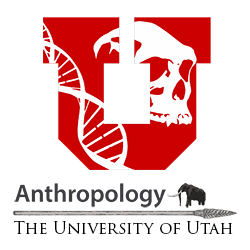Migratory behavior in the enigmatic Late Pleistocene bovid Rusingoryx atopocranion
 Authors:
Authors:
Kaedan O'Brien, Katya Podkovyroff, Diego P. Fernandez, Christian A. Tryon, Lilian Ashioya, J. Tyler Faith
Abstract:
For many animals, migration is an important strategy for navigating seasonal bottlenecks in resource availability. In the savannas of eastern Africa, herds of grazing animals, including blue wildebeest (Connochaetes taurinus), Thomson's gazelle (Eudorcas thomsonii), and plains zebra (Equus quagga), travel hundreds of kilometers annually tracking suitable forage and water. However, we know nearly nothing about migration among the extinct species that often dominated Late Pleistocene communities. Using serially sampled 87Sr/86Sr and δ13C, we characterize the prehistoric movement and diet of the enigmatic wildebeest Rusingoryx atopocranion from two localities (Karungu and Rusinga Island) in the Lake Victoria Basin of western Kenya. We find clear evidence for migration in all four individuals studied, with three 87Sr/86Sr series demonstrating high-amplitude fluctuations and all falling outside the modeled isoscape 87Sr/86Sr ranges of the fossil localities from which they were recovered. This suggests that R. atopocranion exhibited migratory behavior comparable to that of its closest living relatives in the genus Connochaetes. Additionally, individuals show seasonally-variable δ13C, with a higher browse intake than modern and fossil eastern African alcelaphins indicating behavioral differences among extinct taxa otherwise unrecognized by comparison with extant related species. That this species was highly migratory aligns with its morphology matching that of an open grassland migrant: it had open-adapted postcranial morphology along with a unique cranial structure convergent with lambeosaurine dinosaurs for calling long distances. We further hypothesize that its migratory behavior may be linked to its extinction, as R. atopocranion disappears from the Lake Victoria Basin fossil sequence coincident with the refilling of Lake Victoria sometime after 36 ka, potentially impeding its past migratory routes. This study characterizes migration in an extinct eastern African species for the first time and shapes our ecological understanding of this unique bovid and the ecosystems in which Middle Stone Age humans lived.
This publication can be viewed here
